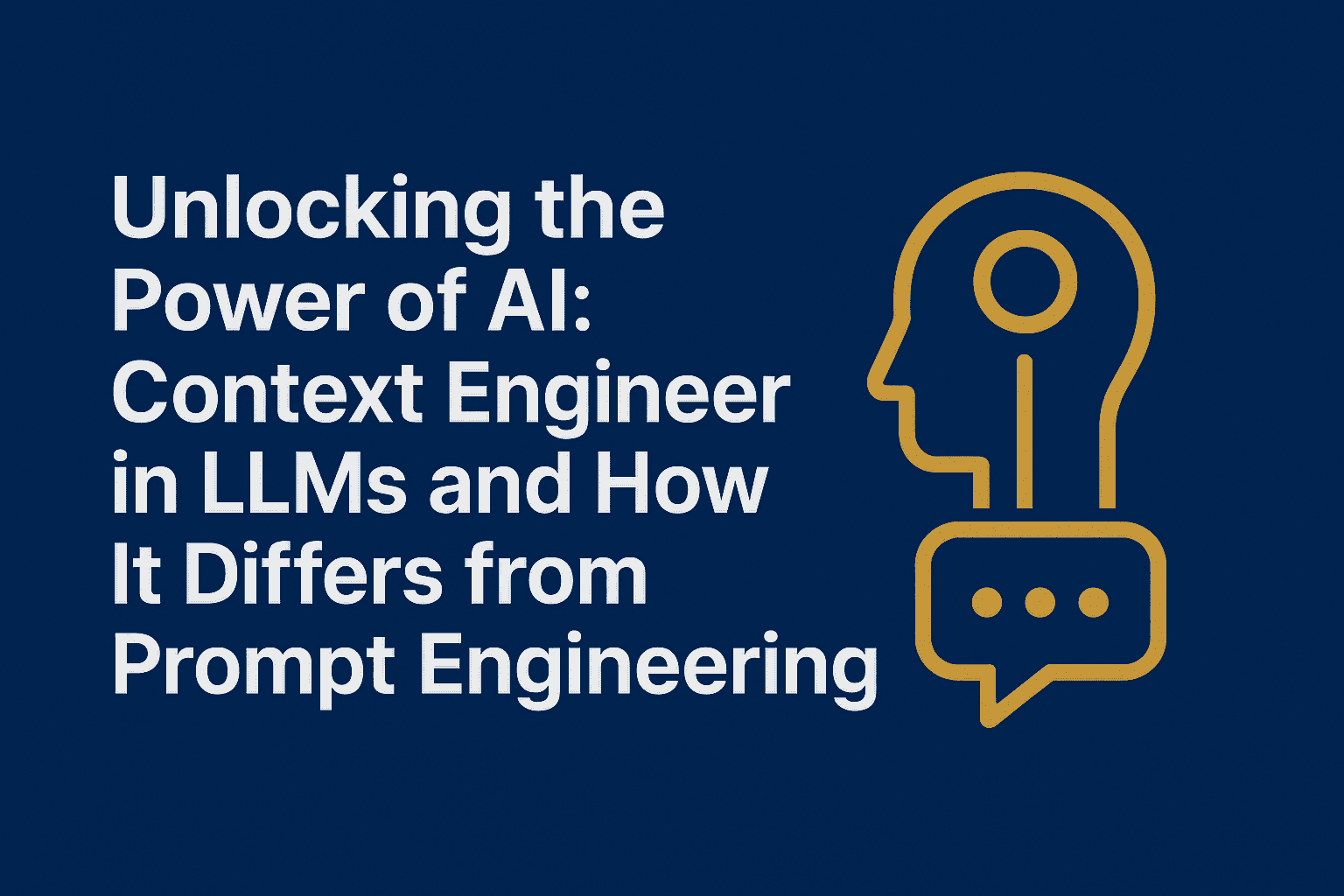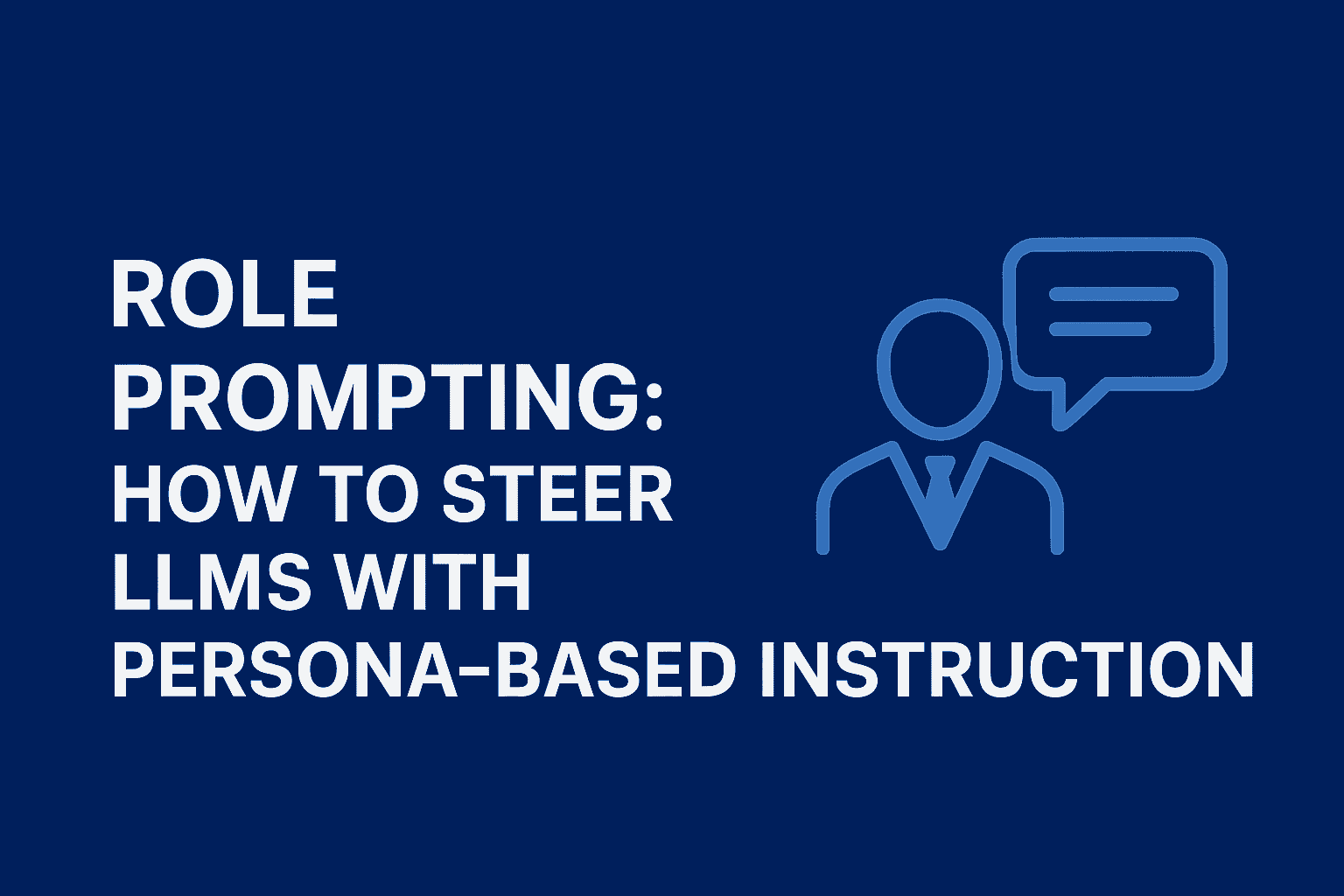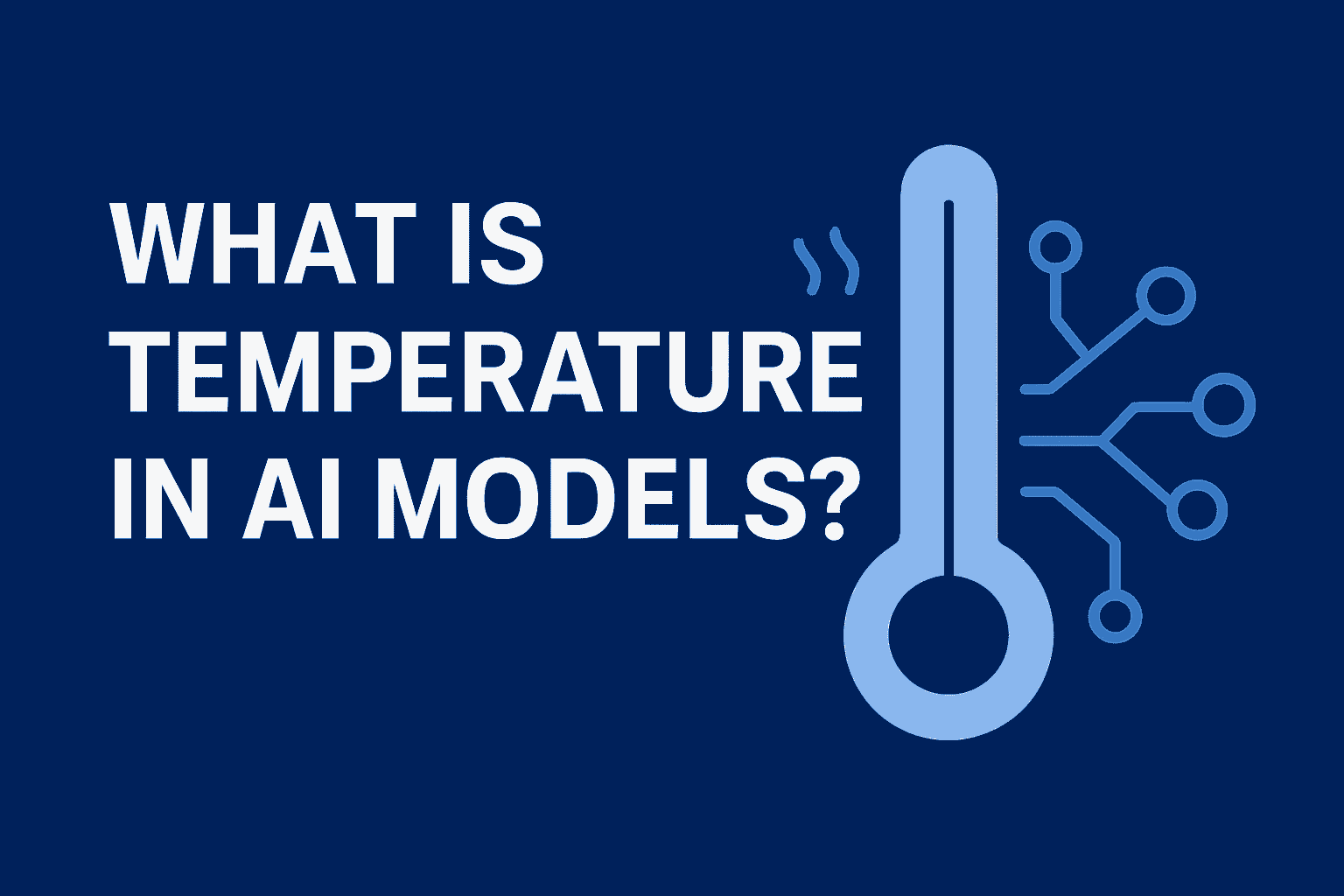
💻 Unlocking the Power of AI: Context Engineering in LLMs and How It Differs from Prompt Engineering
Ai engineer
Prompt engineering is about crafting clever instructions for one-off AI tasks, while context engineering designs the whole ecosystem of memory, data, and tools around an LLM. By curating, compressing, and orchestrating context, systems become more reliable, scalable, and personalized. This shift transforms LLMs from clever guessers into practical agents ready for real-world applications.
💻 Unlocking the Power of AI: Context Engineering in LLMs and How It Differs from Prompt Engineering
Hey there, fellow AI enthusiasts! 👋 If you're anything like me, you've probably spent hours tinkering with large language models (LLMs) like ChatGPT or Grok, trying to get them to spit out exactly what you need. It's fascinating stuff, right? 🤯 Lately, there's been a buzz about something called context engineering, and it's being hailed as the next big thing after prompt engineering. I dove into this topic, scoured the web for insights, and I'm excited to break it down for you in this post. We'll chat about what context engineering really means, how it stacks up against good ol' prompt engineering, and why it might just be the key to building smarter, more reliable AI systems. Grab a coffee ☕ – this is gonna be a deep dive!
🤔 First Things First: What Is Prompt Engineering?
Let's start with the basics. Prompt engineering is basically the art of crafting the perfect question or instruction to feed into an LLM. Think of it as whispering the right words in the model's ear to get the response you want. Back when LLMs first blew up, this was the go-to skill. You'd write something like: "You are a world-class chef. Create a simple recipe for vegan lasagna using only five ingredients." And boom – the model generates a recipe! 🍝
It's all about tweaking the wording, adding examples (like few-shot prompting), or specifying the format (e.g., "Respond in bullet points"). The goal? Make the prompt clear, concise, and effective for a one-off task. It's super useful for quick demos, content creation, or even coding snippets. But here's the thing: as AI apps get more complex – like chatbots that remember conversations or agents that handle multi-step tasks – prompt engineering starts showing its limits. It's great for the moment, but it doesn't scale well when things get messy. 😅
🌍 Enter Context Engineering: The Bigger Picture
Now, imagine prompt engineering as packing a lunchbox for a single picnic. 🧺 Context engineering? That's like designing the entire kitchen, stocking the pantry, and setting up a system so the chef (our LLM) always has the right ingredients at hand, no matter the meal. 🍴 In essence, context engineering is about curating and managing the entire environment around the LLM – not just the prompt, but all the supporting info that helps it think and respond better.
From what I've gathered, context engineering involves dynamically pulling in data from various sources: past chat history, user preferences, external databases, tools like APIs, and even summaries of long documents. 📚 It's about making sure the model has the "right information, in the right format, at the right time" to tackle a task plausibly. This isn't just slapping more text into the prompt; it's architecting a system that adapts to the situation, handles token limits (those pesky caps on how much the model can "read" at once), and keeps things efficient. ⚙️
Why is this rising now? Well, as LLMs evolve into full-blown agents – think AI assistants that book flights ✈️, manage emails 📧, or even run workflows – simple prompts aren't enough. Agents fail not because the model is dumb, but because they lack the full context. Context engineering fixes that by turning LLMs from clever guessers into reliable problem-solvers. 🛠️
🔍 Spotting the Differences: Prompt vs. Context Engineering
Okay, let's get into the nitty-gritty. What's really different between these two? I'll break it down like we're chatting over drinks 🍹 – no jargon overload, I promise.
-
🎯 Scope and Focus : Prompt engineering zeros in on that one input string. It's all about phrasing: "How do I word this to get the best output?" Context engineering, on the other hand, looks at the whole ecosystem. It's asking, "What does the model need to know right now? How do I structure history, tools, and data so it doesn't hallucinate or go off-track?" Prompting is tactical; context is strategic. 🗺️
-
⚡ Static vs. Dynamic : A prompt is usually fixed or tweaked manually for each use. Context engineering is dynamic – it pulls in real-time info, like checking your calendar before suggesting a meeting time. 📅 This makes it perfect for ongoing interactions, where the "context window" (the model's short-term memory) needs constant refreshing.
-
📈 Scalability and Reliability : Ever had a prompt work great once, but flop on the 100th try? That's prompt engineering's Achilles' heel – it struggles with edge cases and variability. Context engineering builds for scale from the start, ensuring consistency across users, sessions, and tasks. It's like software engineering for AI: debugging involves checking the full context flow, not just rewording. 🐞
-
🧠 Tools and Mindset : With prompts, you might use basic interfaces like ChatGPT. For context, you're dealing with memory modules, retrieval systems (like RAG – Retrieval-Augmented Generation), and orchestration tools. The mindset shifts from "craft the perfect ask" to "design the perfect setup." As one expert put it, prompting tells the model how to think, but context gives it the training and tools to succeed. 💪
In short, context engineering = prompt engineering + a whole lot more (like documents, agents, metadata). It's not replacing prompting; it's supercharging it. 🚀
🛠️ Techniques to Master Context Engineering
Alright, if you're hooked, let's talk shop. How do you actually do context engineering? From the pros I've read, it boils down to a few core skills and components. I'll list them out with some real-world flavor. 🌮
-
✍️ Writing Context : This is like note-taking on steroids. Capture key facts in real-time – user details, preferences, or session data – and store them in memory (short-term for ongoing chats, long-term for future use). For example, if a user mentions they're vegan, save that so the AI doesn't suggest steak recipes later. 🥗
-
🔎 Selecting Context : Don't dump everything; curate! Pull only relevant info for the task. Tools like RAG help here – query a database for just the needed docs. This keeps the context window from overflowing and focuses the model. 🎯
-
📦 Compressing Context : LLMs have limits (e.g., 128k tokens), so summarize! Turn a long chat history into a crisp recap: "User is 35, male, 180 lbs, wants muscle gain, high-protein diet." This retains essence without bloat. 🗜️
-
🧩 Isolating Context : For complex tasks, break it into sub-parts. Use specialized "sub-agents" – one for gathering fitness goals, another for diet prefs – to avoid confusion.
Key components include:
- 📜 Instructions/System Prompt : Sets the model's role and rules.
- ❓ User Prompt : The immediate ask.
- 🧠 History/Memory : Keeps conversations coherent.
- 🌐 Retrieved Info : Fresh data from external sources.
- 🛠️ Tools : Functions the model can call, like "search_flights."
- 📋 Output Structure: Force responses in JSON or tables for easy parsing.
Tools like LangGraph for orchestration or LlamaIndex for workflows make this easier, letting you control flows and debug context issues. 🧑💻
🏡 Real-Life Examples to Bring It Home
Theory's cool, but examples make it click. Picture an AI fitness coach called FitCoach. 🏋️♂️
-
Prompt Engineering Only: You prompt: "Create a workout plan." It might spit out something generic, ignoring your age or injuries – risky! 😬
-
With Context Engineering: The system pulls your profile (age 35, injury history), chat history (you want muscle gain), and external data (current trends). It asks targeted questions, validates inputs, and generates a tailored, safe plan. Result? A "magical" experience where the AI feels like a personal trainer. 🏋️♀️
Another one: Scheduling a meeting. A basic prompt might say "Sure, tomorrow works." But with context? It checks your calendar, recalls past emails, and even sends an invite – all seamlessly. 📧✨
In production, think customer support bots that remember your order history or LLM agents debugging code with access to docs and tools. 💻
The Big Wins: Benefits of Context Engineering 🏆
Why bother? Simple: It makes AI work in the real world. Benefits include:
- ✅ Accuracy and Reliability : Reduces hallucinations by grounding responses in solid data.
- ⚡ Efficiency : Manages costs (fewer tokens wasted) and latency (faster responses).
- 📈 Scalability : Handles thousands of users without constant tweaks.
- 😊 User Delight : Feels intuitive and personalized, like talking to a smart friend.
- 🔮 Future-Proofing : As models improve, context becomes the bottleneck – fix it now!
From what I've seen, failures in AI agents are often "context failures," not model ones. Nail this, and your apps go from demo to deployable. 🚀
🌟 Wrapping It Up: The Future Is Contextual
Phew, we've covered a lot! In a nutshell, while prompt engineering is your trusty Swiss Army knife for quick AI tasks, context engineering is the full workshop – essential for building robust, scalable systems. It's not just a buzzword; it's the evolution we need as LLMs tackle more complex, agentic roles. 🤖
If you're building AI stuff, start experimenting with these techniques. Tools like those from LangChain or LlamaIndex can help kickstart it. Who knows? Mastering context might just make you the next AI wizard. 🧙♂️

